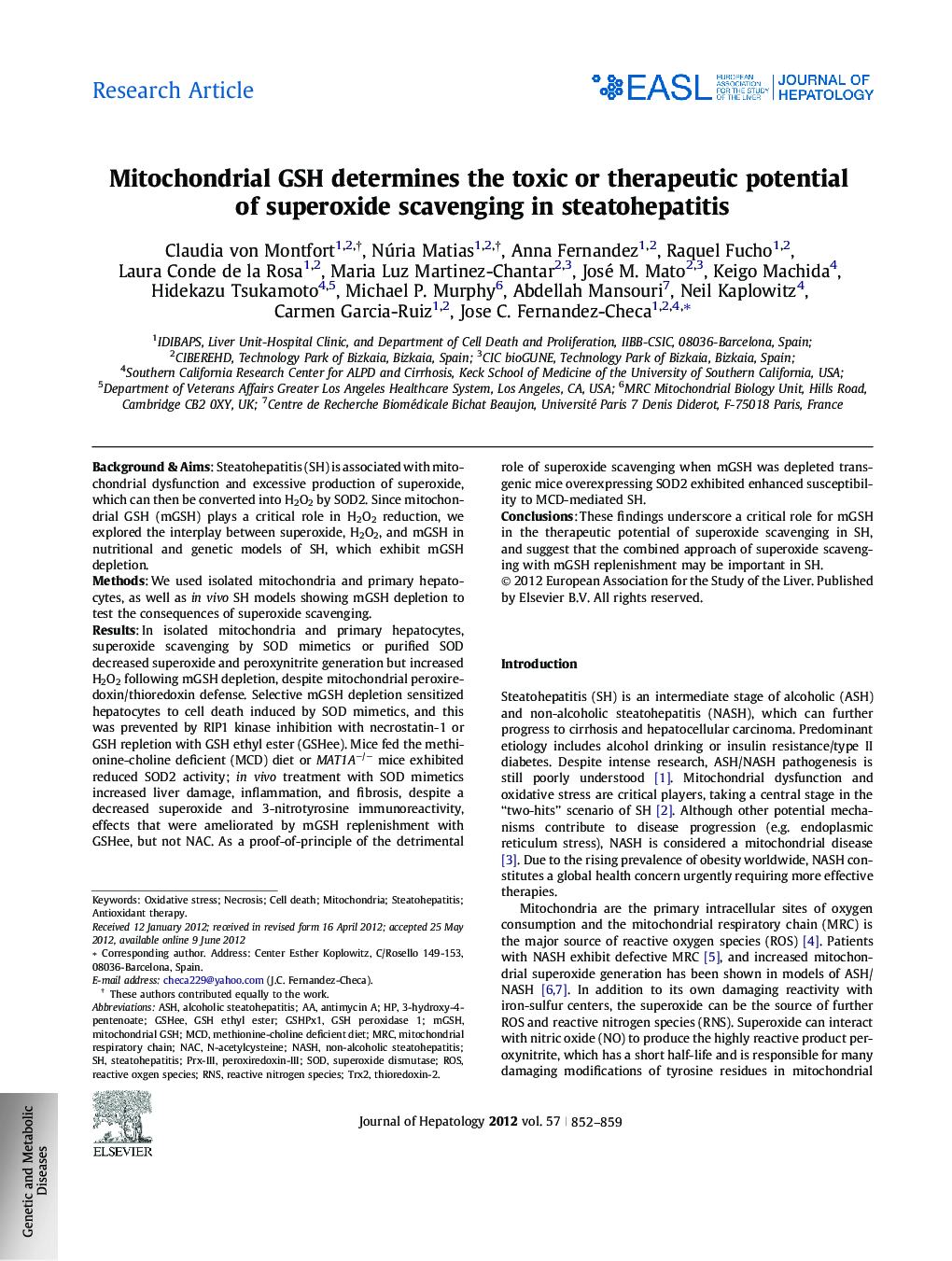| Article ID | Journal | Published Year | Pages | File Type |
|---|---|---|---|---|
| 6106338 | Journal of Hepatology | 2012 | 8 Pages |
Background & AimsSteatohepatitis (SH) is associated with mitochondrial dysfunction and excessive production of superoxide, which can then be converted into H2O2 by SOD2. Since mitochondrial GSH (mGSH) plays a critical role in H2O2 reduction, we explored the interplay between superoxide, H2O2, and mGSH in nutritional and genetic models of SH, which exhibit mGSH depletion.MethodsWe used isolated mitochondria and primary hepatocytes, as well as in vivo SH models showing mGSH depletion to test the consequences of superoxide scavenging.ResultsIn isolated mitochondria and primary hepatocytes, superoxide scavenging by SOD mimetics or purified SOD decreased superoxide and peroxynitrite generation but increased H2O2 following mGSH depletion, despite mitochondrial peroxiredoxin/thioredoxin defense. Selective mGSH depletion sensitized hepatocytes to cell death induced by SOD mimetics, and this was prevented by RIP1 kinase inhibition with necrostatin-1 or GSH repletion with GSH ethyl ester (GSHee). Mice fed the methionine-choline deficient (MCD) diet or MAT1Aâ/â mice exhibited reduced SOD2 activity; in vivo treatment with SOD mimetics increased liver damage, inflammation, and fibrosis, despite a decreased superoxide and 3-nitrotyrosine immunoreactivity, effects that were ameliorated by mGSH replenishment with GSHee, but not NAC. As a proof-of-principle of the detrimental role of superoxide scavenging when mGSH was depleted transgenic mice overexpressing SOD2 exhibited enhanced susceptibility to MCD-mediated SH.ConclusionsThese findings underscore a critical role for mGSH in the therapeutic potential of superoxide scavenging in SH, and suggest that the combined approach of superoxide scavenging with mGSH replenishment may be important in SH.
